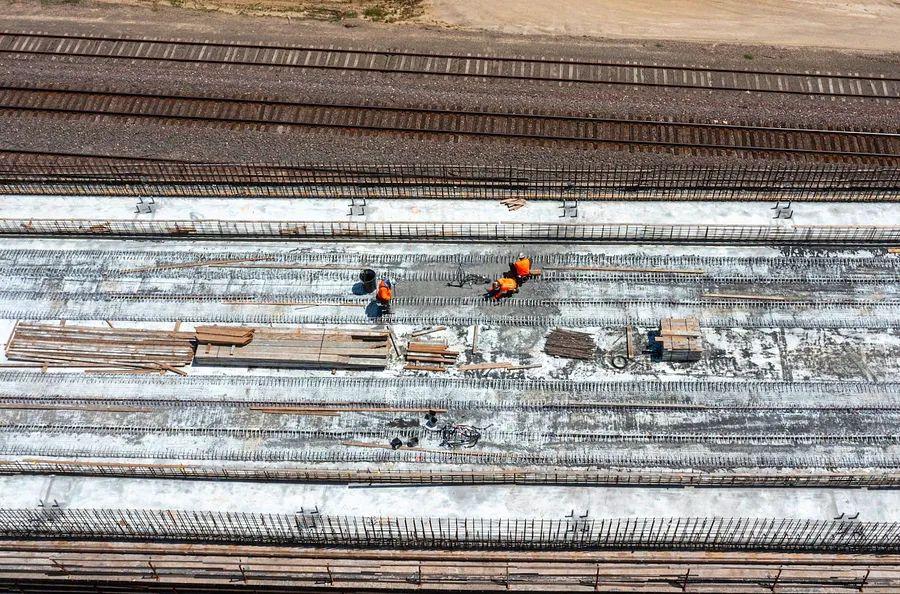Momentum builds for connecting Brightline West with California's bullet train

Progress is being made on the plan to connect two major high-speed rail lines currently being constructed in California, fueled by a recent key development.
The High Desert Corridor Joint Powers Agency has recently finalized two significant labor agreements that could facilitate a 54-mile link between the ongoing Brightline West and California High-Speed Rail projects (often called the "bullet train").
With this advancement, officials foresee a future where passengers can enjoy a "one-seat" journey from Las Vegas to downtown Los Angeles.
However, many steps remain before this vision becomes a reality.
Two systems currently under development
California is a hub for emerging high-speed rail initiatives.
Despite experiencing years of expensive setbacks, the long-awaited California High-Speed Rail is poised to become a key transportation option in the state — once operational — linking the Bay Area and Los Angeles in under three hours. Future phases will extend the network to Sacramento and San Diego.
 Construction on California High-Speed Rail in January 2024 near Fresno. ROBERT GAUTHIER/LOS ANGELES TIMES/GETTY IMAGES
Construction on California High-Speed Rail in January 2024 near Fresno. ROBERT GAUTHIER/LOS ANGELES TIMES/GETTY IMAGESIn the meantime, Brightline, the private firm responsible for the groundbreaking rail system in Florida, commenced construction this spring on a new 218-mile high-speed rail line aimed at connecting Southern California with Las Vegas ahead of the 2028 Olympic Games in Los Angeles.
 GRIMSHAW ARCHITECTS/BRIGHTLINE WEST
GRIMSHAW ARCHITECTS/BRIGHTLINE WESTIn the midst of these two initiatives, a coalition of Southern California leaders is dedicated to establishing a seamless connection between the two electric rail lines.
High Desert Corridor
The envisioned High Desert Corridor would cover 54 miles and has been under discussion for several years. The proposal includes a route extending from Victor Valley at the eastern end — a Mojave Desert town in the Inland Empire where Brightline West plans to construct a station — to Palmdale at the western end, where the bullet train is anticipated to operate.
 HIGH DESERT CORRIDOR JOINT POWERS AGENCY
HIGH DESERT CORRIDOR JOINT POWERS AGENCYThe proposals mandate that the tracks accommodate trains from both systems, allowing potential operators to transport passengers at speeds exceeding 200 miles per hour, as stated by a spokesperson for the organization to TPG.
The group envisions that this project could ultimately enable direct rail service between Las Vegas and Los Angeles Union Station. However, riders using Brightline West will need to connect to local transportation to access the city center.
California state environmental approval for the High Desert Corridor was obtained in June 2016, and its leaders are currently pursuing similar federal authorizations.
They are also actively seeking additional funding. To date, leaders have allocated $2 billion for the project and expressed to TPG their willingness to explore various funding avenues — including federal grants, loans, or partnerships with private firms.
Current estimates suggest the overall project cost could range between $5 billion and $6 billion — though this figure may change as the plans continue to evolve and be refined.
The group aims to commence construction by 2028, coinciding with the anticipated completion of Brightline West.
Recently, the project made significant progress when over a dozen unions signed a memorandum of understanding, facilitating labor agreements for both construction and future maintenance and operations once the line is finished.
In summary
California is advancing two major high-speed rail initiatives, and there are now encouraging signs for a plan to link the two systems, potentially creating a much more interconnected transportation network on the West Coast in the near future.
This progress unfolds amidst significant federal and private investments in rail infrastructure across the U.S. With new intercity lines and transformative upgrades along Amtrak's Northeast Corridor, it's a pivotal time for the evolution of train travel in the country.

1

2

3

4

5
Evaluation :
5/5